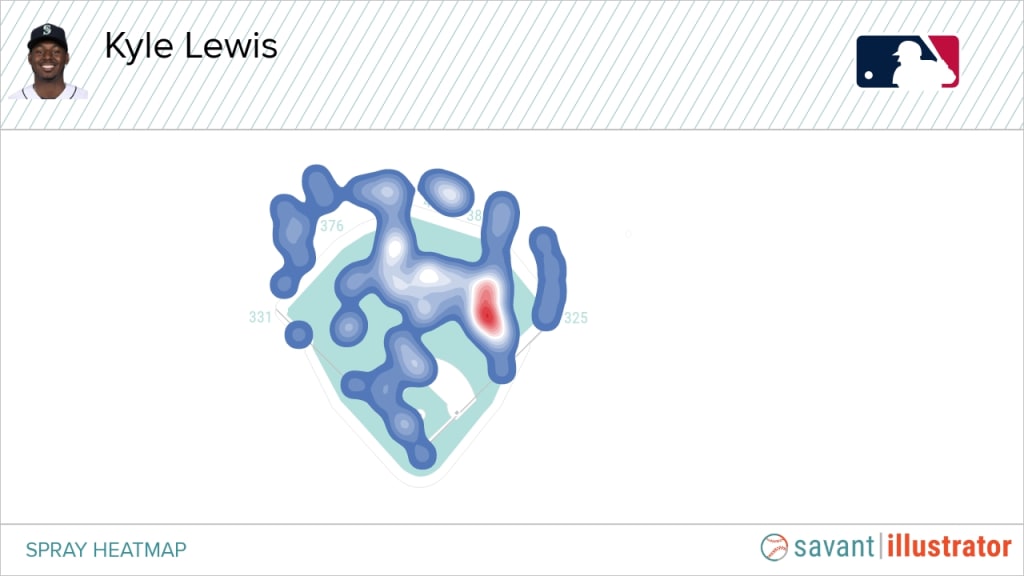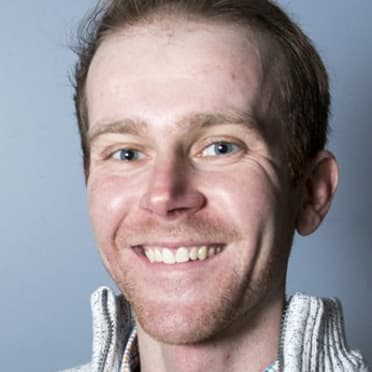SEATTLE -- He’s the reigning American League Rookie of the Year, an emerging star not only in the Mariners’ organization but across the Majors. Yet, in the grand scheme, Kyle Lewis enters the 2021 season still a very green product, one who is still learning the league and himself.
Though it may seem like he's been around for an extended stretch, Lewis, who's making his 2021 debut Tuesday after opening the year on the injured list, has less than half of a regular season under his belt -- just 76 games. A big part of that might be because time seems so warped these days; Lewis debuted with a roar in 2019, hitting six homers in his first 10 games, then he followed that up by slashing .262/.364/.437 with 11 homers in 58 games and catapulting his way into the spotlight as the AL’s top rookie.
But in many ways, the 25-year-old isn’t that far removed from Seattle’s farm system, which came in at No. 3 in MLB Pipeline’s latest organizational rankings. In fact, Lewis was the first Draft pick by general manager Jerry Dipoto way back in 2016, and he was the centerpiece of the rebuild before the rebuild even began. His '20 gave the future even more validation, especially with prospects Jarred Kelenic and Julio Rodríguez on the way.
Lewis’ 2020 was blemished with accolades and prestige. Even in Seattle’s most esteemed athletic circles, he’s established a name for himself.
One of the first people to congratulate him was Seahawks quarterback Russell Wilson, who reached out via text and has maintained contact since -- a signal of respect from one of the city’s most prominent ambassadors, in and away from sports. Ahead of a March 22 Spring Training game against the Dodgers, the one in which he hurt his knee, Lewis shared a moment with Mookie Betts, who has become one of the preeminent faces of baseball.
How has the humble, Southern-rooted Lewis handled the rapid rise to fame?
“I was kind of honored for that,” Lewis said of his high-profile interactions of late. “There were a lot of guys, a lot of different faces and names from a lot of different avenues reaching out. That was a blessing. And as far as the expectations, I think I haven't really been able to feel any of that. I don’t try to play into any of that. So, for me personally, you know, I'm definitely aware of the fact that I have high expectations for myself always.
“So it's kind of cool to be able to come back, win to an award and come back again the next year and see what we can do this time around.”
Lewis’ ascent may seem swift. But in his eyes, 2020 presented a huge roadblock because it didn't include the challenge of a 162-game test. That’s why he’s eager for ’21. But Lewis will enter this regular season with a far more pronounced reputation -- and plenty of scouting reports on him.
Lewis won the AL’s top rookie honors unanimously, but that recognition was in large part due to a torrid start in July and August, when he hit .328/.418/.527 with eight homers in his first 36 games. At that point, he was neck-in-neck with White Sox rookie Luis Robert atop just about every offensive category.
By September, Robert’s offensive numbers began to dip dramatically. And while Lewis also had a skid in that stretch, it wasn’t as distinct. But his numbers in the final month -- a .139/.258/.266 slash line over his final 23 games -- offered a reminder to Seattle’s center fielder that opposing pitchers are beginning to take notice and adjust accordingly.
“People will know who I am, where we play at, things like that,” Lewis said. “They may have a bit of a book. But, to me, the books and the scouting reports and things of that nature, they only work as well as you play into them. My personal challenge is to continue to be who I am, stick to who I am, and not come off of that.”

For Lewis, who didn’t begin playing baseball until high school, that approach is sacrificing strikeouts for center-to-opposite-field power while improving against secondary pitches. In his first at-bat last season, Lewis demolished an elevated fastball from Justin Verlander for a 438-foot homer on Opening Day. Verlander then didn’t throw him another heater the rest of the game.
Lewis hit .299 against secondary pitches last year, but he also benefited from some good luck. According to Statcast, his expected batting average on those balls was .262. And he swung and missed at 42.8 percent of non-fastballs overall, significantly above the league average of 34 percent. That high whiff rate -- which has led to a 31.5 percent strikeout rate since debuting -- is something Lewis is trying to improve, specifically with pitching machines on the backfields at the Peoria Sports Complex, which he worked on during Spring Training.
“I don't think that when players struggle with offspeed pitches it’s necessarily the ability to hit them,” Lewis said. “I think it's more decision-making. And I think it's more of timing and [staying] on balance. So you definitely can refine those throughout practice.”
But Lewis had hit a stride just before he got hurt, going 6-for-15 with just one strikeout and his first Cactus League homer over his most recent four games before the injury. Now, the questions relate to his timing and preparedness at the plate, given that his rehab was exclusively limited to the alternate training site, and the Mariners had no opposing teams to conduct exhibition games against.
“Kyle’s personality, he's all business,” Mariners manager Scott Servais said. “He wants to let his game on the field speak for him and he’s still looking to improve upon a number of things within his game."
Lewis is quiet, confident and composed -- and as Servais said: "He's present."


